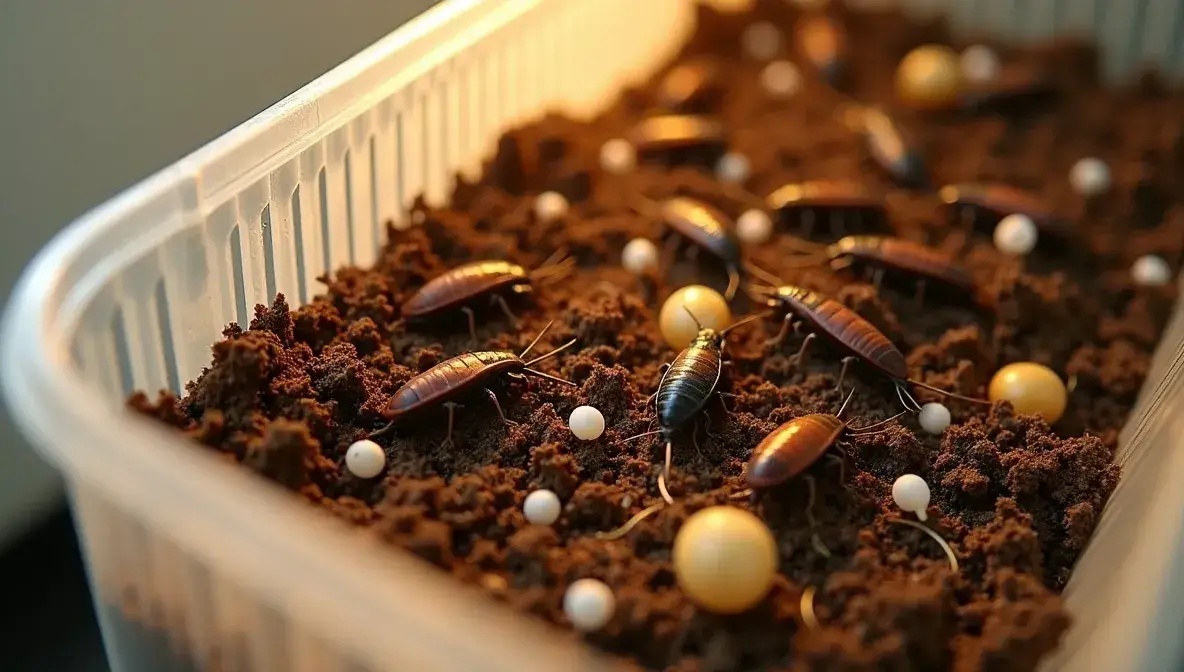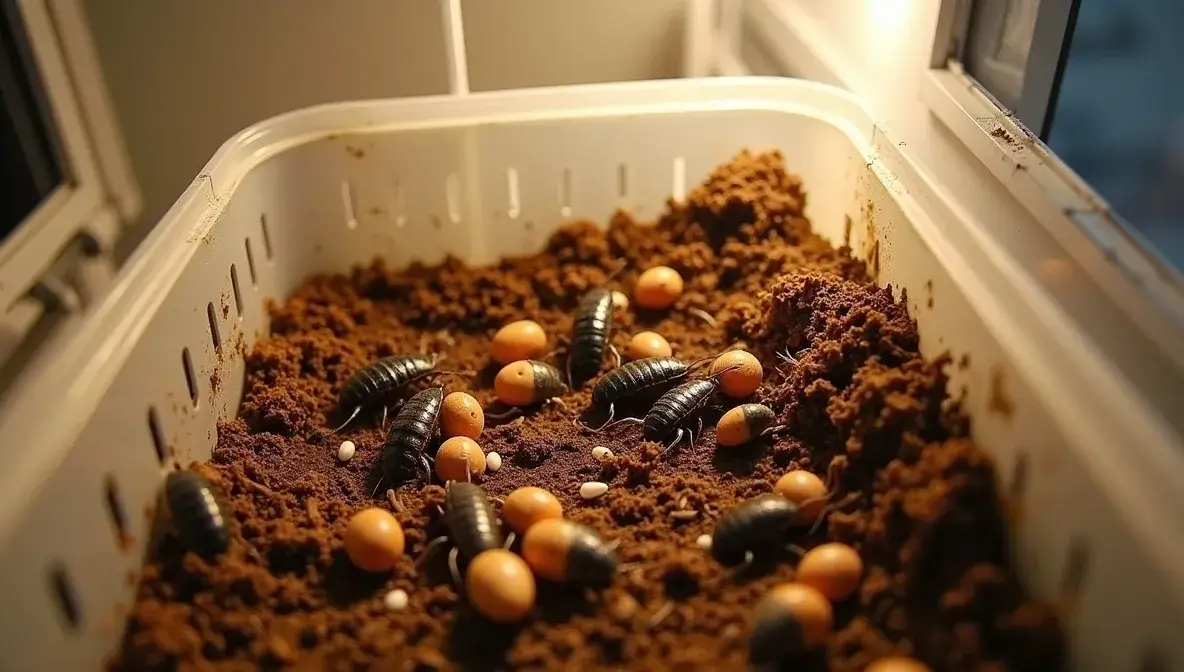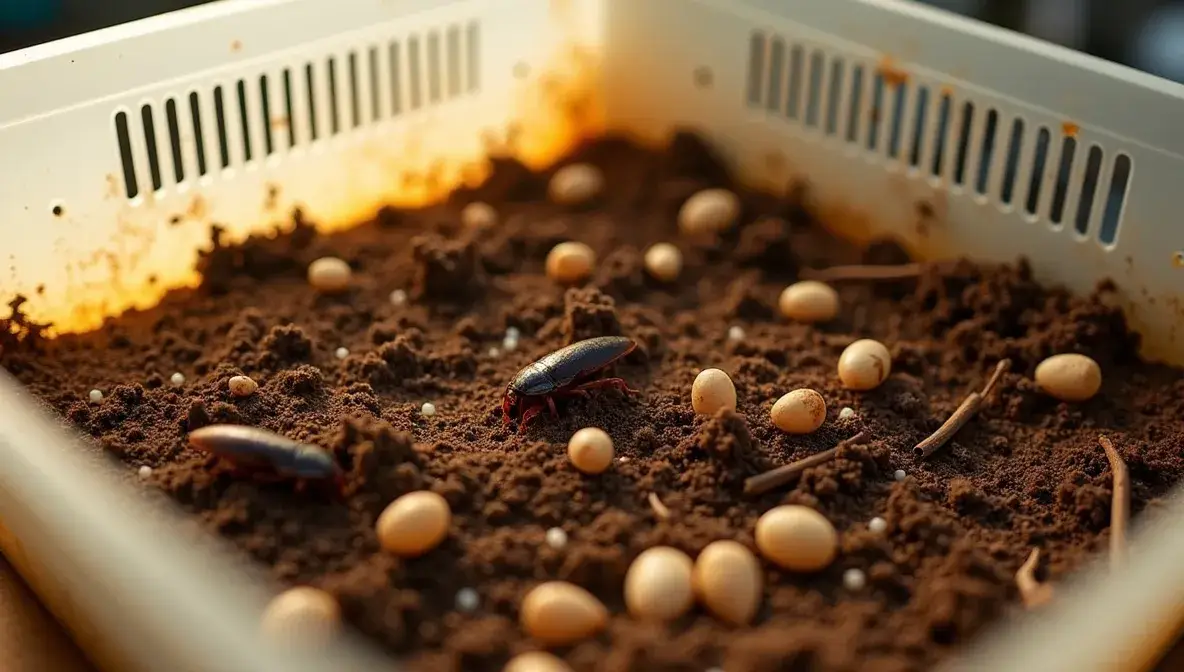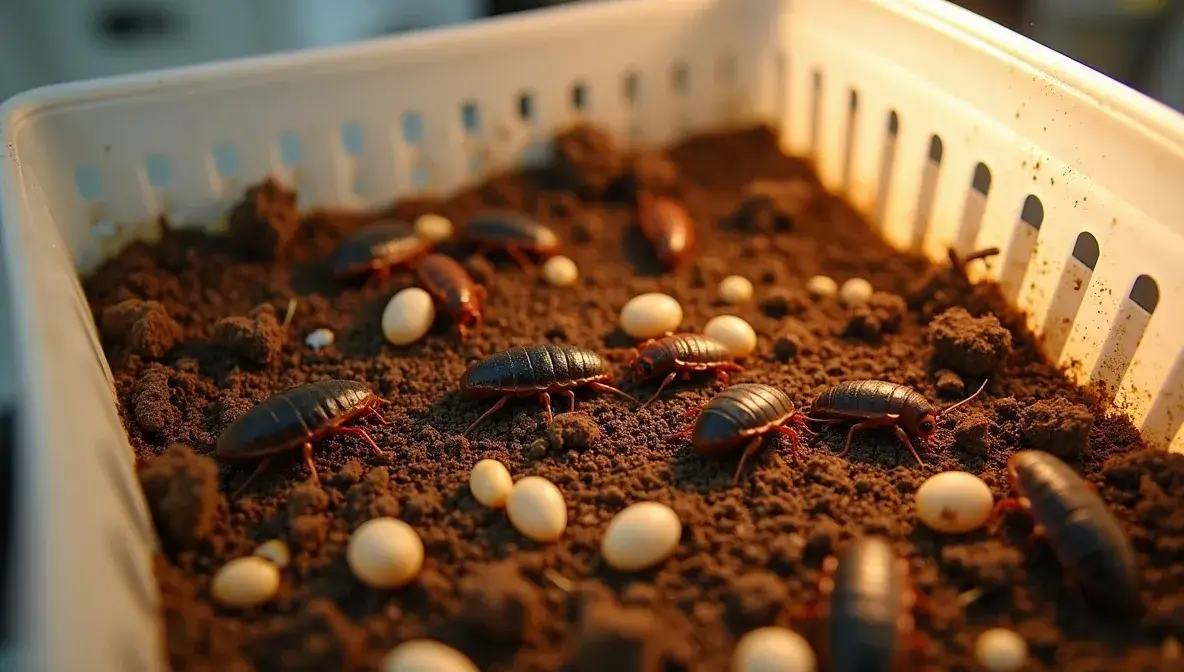If you’re considering breeding Dubia roaches, you might be wondering, “How long does it take Dubia roaches to breed?” Understanding their breeding timeline is crucial, especially for reptile owners who rely on these insects as a staple feeder. Dubia roaches (Blaptica dubia) are a popular choice for feeding reptiles, amphibians, and other exotic pets due to their high protein content, low odor, and ease of care. Their efficient breeding cycle makes them an excellent option for anyone looking to establish a sustainable feeder colony.
In this comprehensive guide, we’ll explore the breeding process of Dubia roaches, factors that influence their reproduction, and how you can optimize their care for faster breeding. Whether you’re a beginner or an experienced caretaker, this article will provide valuable insights to help you better manage your colony.
Understanding the Breeding Cycle of Dubia Roaches

Dubia roaches have a relatively straightforward breeding cycle, but it’s important to understand their life stages and reproductive habits to estimate how long it takes for them to produce offspring. Here’s a brief breakdown:
- Life Stages
- Dubia roaches go through three main life stages: egg, nymph, and adult.
- Females give birth to live nymphs, bypassing the egg-laying stage seen in other insects. This is called ovoviviparity.
- Time to Sexual Maturity
- It takes approximately 4 to 6 months for a nymph to mature into a breeding adult, depending on environmental conditions.
- Breeding and Gestation
- Once mature, adult Dubia roaches breed continuously. Females have a gestation period of 28 to 35 days, after which they give birth to 20–40 live nymphs.
From start to finish, the entire breeding process can take around 4 to 8 months, depending on factors such as temperature, humidity, and diet. Maintaining optimal conditions can significantly reduce this timeline.
Factors That Influence Breeding Speed

The breeding timeline of Dubia roaches isn’t set in stone. Various factors can speed up or slow down the process. Let’s take a closer look at the key elements:
Temperature and Humidity
- Optimal Temperature: Dubia roaches thrive at temperatures between 85°F and 95°F. Warmer temperatures within this range can accelerate their metabolism and reproductive cycle. If the temperature drops below 70°F, breeding slows significantly or stops altogether.
- Humidity Levels: A humidity level of 40% to 60% is ideal. Proper humidity ensures nymphs are born healthy and reduces stress on the roaches.
Quick Tip: Use a heat mat or ceramic heat emitter to maintain consistent temperatures and a hygrometer to monitor humidity levels.
Diet and Nutrition
- A well-balanced diet directly impacts the health and breeding efficiency of Dubia roaches. They require high-quality food rich in protein, such as:
- Commercial roach chow
- Fresh fruits (e.g., oranges, apples)
- Vegetables (e.g., carrots, sweet potatoes)
- Providing a consistent food source ensures females have the energy to produce healthy offspring.
Did You Know? Oranges are particularly beneficial for stimulating breeding activity due to their high moisture and sugar content.
Colony Size and Ratio
- The ratio of males to females plays a critical role in breeding success. A good rule of thumb is to maintain a 1:3 male-to-female ratio. Too many males can stress females, while too few males may result in slower reproduction.
Space and Housing
- Overcrowding can lead to stress and negatively affect breeding. Provide enough space for your colony to thrive by using a well-ventilated plastic bin or aquarium with a secure lid.
- Include egg crates or cardboard pieces to maximize surface area and give the roaches places to hide and breed comfortably.
How to Set Up a Breeding Colony for Faster Results

If you’re starting your own Dubia roach colony, here’s a step-by-step guide to ensure optimal breeding conditions:
- Choose the Right Enclosure
- Use a plastic tub or glass tank with a secure lid. Drill small holes or use a mesh screen for ventilation. Make sure the enclosure is escape-proof.
- Maintain Proper Conditions
- Keep the enclosure in a warm, humid environment. Use a thermostat to regulate heat sources and a hygrometer to monitor humidity.
- Provide Quality Food and Water
- Offer a varied diet and always provide a water source, such as water crystals or a damp sponge. Avoid standing water, as it can drown the roaches.
- Monitor the Colony
- Check regularly for signs of breeding activity. You should start seeing nymphs within 1–2 months if conditions are ideal.
- Separate Nymphs if Needed
- To prevent overcrowding and competition, you can move nymphs to a separate enclosure once they are born.
Common Questions About Dubia Roach Breeding
How Often Do Dubia Roaches Breed?
Adult females can breed continuously once they reach maturity. They typically produce a new batch of nymphs every 28–35 days.
How Many Nymphs Do Dubia Roaches Produce?
Each female gives birth to around 20–40 live nymphs per cycle. Over time, a single female can produce hundreds of offspring.
Why Isn’t My Colony Breeding?
If your Dubia roaches aren’t breeding, consider the following factors:
- Low temperature or humidity: Ensure optimal environmental conditions.
- Poor nutrition: Offer a balanced diet with plenty of protein.
- Stress or overcrowding: Check the male-to-female ratio and provide adequate space.
Benefits of Breeding Dubia Roaches
Breeding Dubia roaches at home offers several advantages, especially for reptile enthusiasts:
- Cost-Effective: Buying roaches regularly can be expensive. A self-sustaining colony can save you money in the long run.
- Convenient: You’ll always have a fresh supply of feeders on hand.
- High-Quality Nutrition: By controlling their diet, you can ensure your roaches are healthy and nutritious for your pets.
- Eco-Friendly: Dubia roaches produce minimal odor and waste compared to other feeder insects.
Conclusion
So, how long does it take Dubia roaches to breed? With optimal care, you can expect them to start reproducing within 4 to 6 months of establishing a colony. By maintaining the right temperature, humidity, and nutrition, you can significantly speed up the process and ensure a steady supply of feeders for your pets.
Breeding Dubia roaches is a rewarding and practical endeavor for reptile owners. Not only does it save money, but it also gives you full control over the health and quality of your feeders. Whether you’re just starting or looking to optimize your existing colony, the tips in this guide will help you achieve success.
If you found this article helpful, feel free to share your experiences or ask any questions in the comments below. For more tips on reptile care and feeder insects, check out our related posts! Drguidez.

Mark Manson is an expert blogger specializing in Dubia Roaches. He shares practical care tips, breeding insights, and feeding advice to help enthusiasts and reptile owners thrive.

